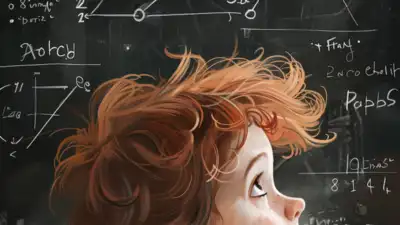5 ancient mental maths systems that can give students an edge in STEM courses

Long before calculators existed, civilisations across the globe developed ingenious mental calculation systems that could solve complex problems in seconds. These time-tested methods are experiencing a remarkable renaissance in modern education, proving ancient wisdom can enhance contemporary learning.
Vedic mathematics : India’s computational genius
Rooted in India’s sacred Vedas, this system uses 16 elegant sutras (formulas) for lightning-fast calculations. When multiplying numbers close to 100, like 98 × 97, practitioners use special techniques that eliminate traditional long multiplication entirely.The brilliance lies in understanding mathematical relationships rather than memorising procedures. Students learn to see numbers as flexible entities, developing both speed and deeper intuition. This approach has made Vedic mathematics increasingly popular in international competitions where accuracy and speed are crucial.
Abacus mental calculation : Asia’s visualisation mastery
Students begin with physical abacus manipulation, then develop the extraordinary ability to visualise virtual beads mentally. Children as young as six can perform multi-digit calculations in seconds, often outpacing electronic calculators.Beyond raw speed, this system develops concentration, memory, and spatial reasoning. Research shows students trained in these techniques demonstrate improved performance across multiple subjects, with benefits extending far beyond mathematics alone.
Trachtenberg system : Wartime innovation
Developed by Jakow Trachtenberg in a Nazi concentration camp, this system emphasises logical patterns over rote memory. For multiplying by 11, students simply add each digit to its neighbour, transforming complex calculations into simple mental steps.Each number from 2 to 12 has specific pattern-based techniques. The method for multiplying by 6 involves adding half of each digit to its neighbour, creating systematic approaches that become intuitive tools for mental calculation.
Japanese Soroban : streamlined precision
Japan’s refined version of the Chinese abacus created the Soroban system, emphasising precision and systematic thinking. Students learn standardised procedures that Japanese educators call “beautiful calculation”—techniques that are fast, accurate, and elegant.The mental aspect (Anzan) requires visualising bead movements with perfect clarity whilst maintaining focus. This cognitive training strengthens working memory, spatial reasoning, and attention span—skills benefiting academic performance across all subjects.
Chisenbop : Korea’s tactile revolution
This finger-counting technique transforms hands into sophisticated calculation devices. The right hand represents units (1-9) whilst the left represents tens (10-90), allowing rapid arithmetic through finger manipulation.Chisenbop’s strength lies in accessibility, it requires no equipment and can be learned quickly. This tactile approach particularly benefits young children who learn through physical movement, serving as an excellent bridge between concrete and abstract mathematical thinking.
The global renaissance
These systems reflect diverse cultural approaches to numerical problem-solving, each offering unique benefits. Contemporary neuroscience research validates their principles: multi-sensory learning, pattern recognition, and systematic practice all contribute to enhanced mathematical ability and general cognitive function.As educators seek more effective teaching methods, these ancient systems offer proven alternatives to traditional approaches. Their integration into modern curricula represents an evolution towards more comprehensive, engaging mathematical education that develops both computational skills and critical thinking abilities essential for the digital age.





